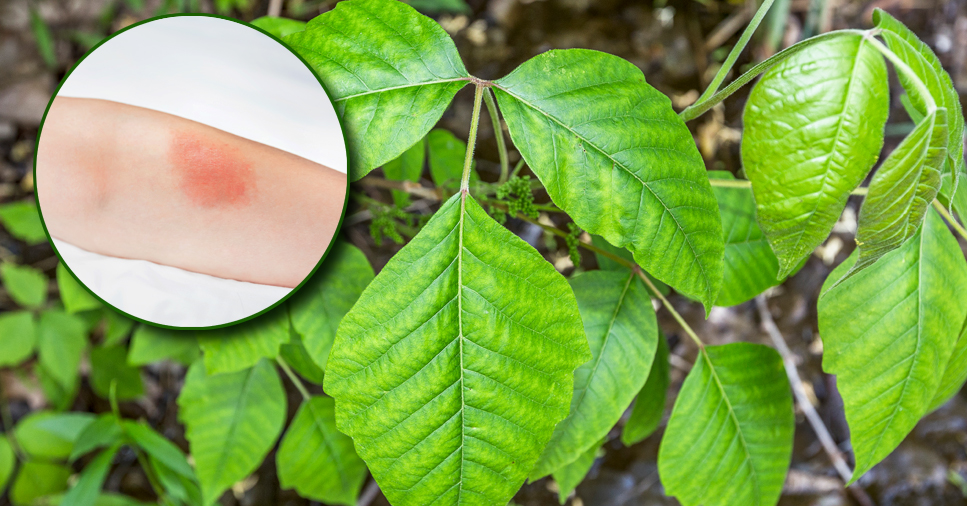Some of the most common culprits for an itchy rash are contact with poison ivy, poison oak or poison sumac. These plants can cause a stubborn allergic reaction that sticks around for days or even weeks if not treated properly. Knowing how to treat poison ivy rash and other plants irritating your skin can help you resolve it quicker.
If you notice a poison ivy rash or irritation likely caused by a similar plant and home remedies aren’t working, make an appointment with your primary care provider. However, you can visit your nearest urgent care or walk-in clinic without an appointment.
What causes the rash?
The itchy reaction you get from poison ivy, poison oak or sumac plant isn’t caused by the leaves themselves but by an oily substance called urushiol. This oil can stick to your skin, clothes, pets or even gardening tools.
It’s so sticky that just brushing against the plant or touching something that has the oil on it can be enough to cause a reaction.
Your body sees urushiol as a threat and your immune system responds with inflammation, leading to an itchy red rash, redness, swelling and sometimes blisters.
Where these plants hide
Most people think you have to touch the leaves, but the roots of poison oak or poison sumac can also carry urushiol. So digging, pulling weeds or raking leaves can expose you to the oil even when you don’t see the plants.
- Poison ivy: Grows as a vine or shrub, usually in the eastern and central U.S.
- Poison oak: Looks like an oak leaf and often grows in shrub form, especially on the West Coast
- Poison sumac: Grows in swampy areas, often as a small tree or tall shrub
These plants all produce urushiol, so if you’ve had a reaction to one, you’ll likely react to all three.
What to do if you touch poison ivy or similar plants
While you may not be able to avoid a poison ivy rash entirely, take these steps to minimize your potential reaction.
Wash your skin immediately
If you think you’ve come into contact with poison ivy, oak or sumac, your first step should be to wash your skin as soon as possible. Urushiol starts to sink in quickly, so timing matters.
- Use soap and cool water
- Avoid scrubbing, which can break the skin and spread the oil
- Clean under your fingernails to prevent transfer
Clothing, shoes and gardening tools should also be cleaned since the oil can stick for days or even weeks if not removed.
Recognizing the rash
The allergic reaction usually starts within 12 to 48 hours after exposure and can last up to three weeks. Symptoms can include:
- Redness and swelling
- An itchy rash that often forms in lines or patches
- Fluid-filled blisters that may weep or crust over
While the rash itself isn’t contagious, the oil can spread if it’s still present on your skin or items you’ve touched.
How to treat poison ivy rash at home
Most cases of poison ivy or related rashes can be treated at home with over-the-counter remedies. Here’s what to try:
- Apply calamine lotion: This pink lotion is a go-to for soothing itching and drying out blisters. Reapply as needed for comfort.
- Use colloidal oatmeal: An oatmeal bath or lotion can calm irritated skin and reduce inflammation. Look for products made specifically for rashes and itching.
- Try diphenhydramine (Benadryl): This oral antihistamine can help reduce the immune response and itching, especially at night. Be aware that it may cause drowsiness and only take if necessary.
- Use baking soda paste: Mix baking soda with a little water to form a paste and apply it to itchy spots. It’s a gentle way to dry out blisters and relieve discomfort.
Cool compresses, lukewarm baths and loose clothing can also make a big difference while your skin heals.
When to see a doctor
While most reactions are mild to moderate, some can become more serious. Contact your doctor or call 911 if:
- The rash covers a large area or is near your eyes, mouth or genitals
- You have a fever or signs of infection-like pus or increased redness
- You’re having difficulty breathing
- You’ve had severe reactions in the past
In more serious cases, prescription corticosteroids or even a steroid shot may be needed to control the inflammation.
How to prevent a poison ivy rash
The best poison ivy treatments are the ones you never need in the first place. Taking a few precautions can help you stay rash-free:
- Learn to identify the plants: “Leaves of three, let it be” is an easy rule to remember, but familiarize yourself with the specific look of ivy, oak or sumac in your area.
- Wear protective clothing: Long sleeves, pants, gloves and boots create a barrier between your skin and urushiol. If you’re hiking or working in the yard, gear up.
- Use barrier creams: Some over-the-counter creams claim to block urushiol. These can be helpful if you’re going into areas where exposure is likely.
- Clean up after exposure: Even if you didn’t notice contact, it’s smart to wash your skin and rinse gear, tools and pets after spending time in areas where the plants grow.
How we can help
While poison ivy is one of the most well-known culprits, many other things can cause an itchy rash. Fragrances, soaps, certain plants and even metals like nickel can cause contact dermatitis. Many of the same treatments, like colloidal oatmeal, baking soda and antihistamines, can help.
If you need to treat poison ivy rash, or any rash you’re concerned about, head to your nearest urgent care clinic or make an appointment with your primary care provider to get back on the mend.
Learn about the primary care services and the urgent care and walk-in care services we offer at Mercy Health.






